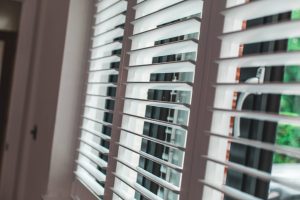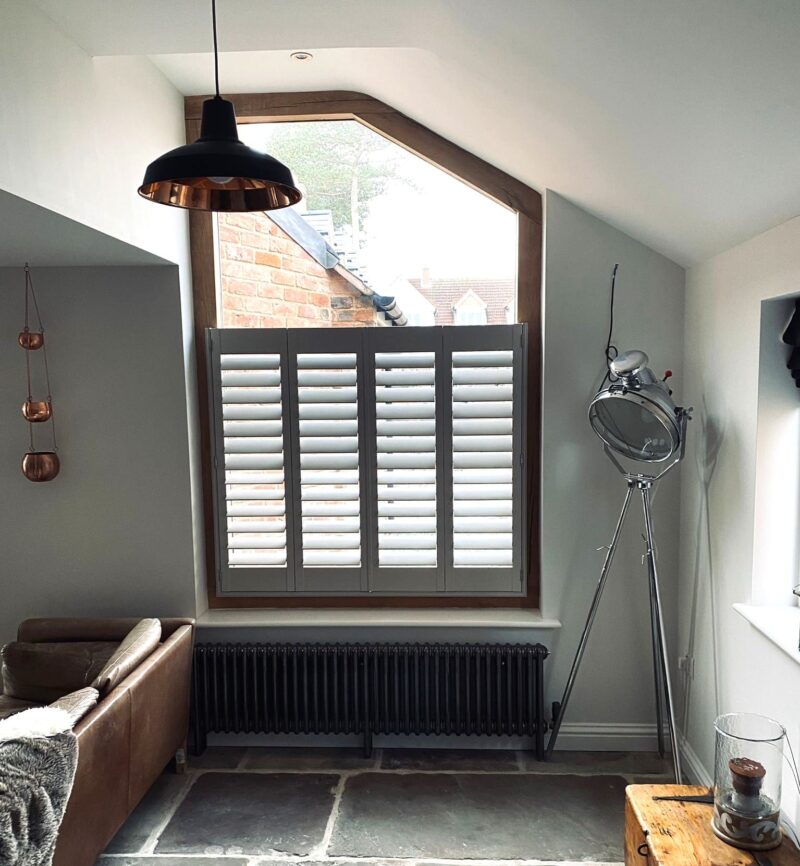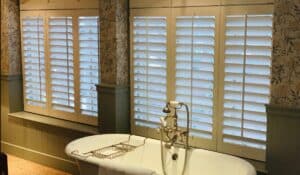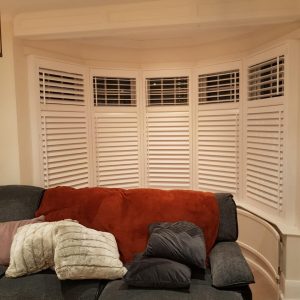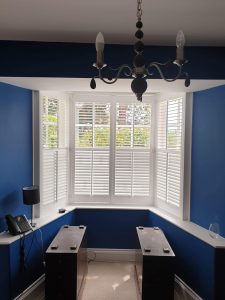Everything You Need to Know about Tier-on-Tier Shutters
When it comes to window dressings, tier-on-tier shutters are a style that always sparks curiosity.
You might have spotted them in a friend’s home, admired them on Pinterest, or heard them mentioned as a versatile alternative to curtains and blinds. But what exactly are they, and why are they becoming such a popular choice for homeowners? More importantly, are they the right solution for your home?
This guide will walk you through everything you need to know about tier-on-tier shutters. From how they’re made and the materials you can choose from, to their benefits, maintenance, and even the costs you should expect, you’ll leave with a clear picture of whether these shutters are the perfect fit for your space.
What Are Tier-on-Tier Shutters?
Tier-on-tier shutters are a style of plantation shutter made up of two separate panels – one on the top half of your window and one on the bottom.
The panels are completely independent of each other, so you can open the top while leaving the bottom closed, or vice versa. This design means you don’t have to choose between natural light and privacy; you can have both depending on the time of day and your mood.
The overall look is clean, structured, and elegant, with the bonus of flexibility that other window dressings simply can’t offer. Unlike café-style shutters, which only cover the lower portion of your window, tier-on-tier shutters provide full coverage while still giving you the freedom to adjust each tier to suit your needs.
How Are They Made?
The appeal of tier-on-tier shutters lies in their precision. They are typically crafted to fit your exact window dimensions, ensuring a snug, seamless fit.
This isn’t the kind of product you grab off the shelf in a homeware store; they’re bespoke by nature. The framework and louvres are designed to match the measurements of your window, which means no awkward gaps where light can creep through.
Each shutter panel is fitted with louvres – the adjustable slats that tilt to let light in or block it out. Because of the tiered design, you gain more versatility compared to a single-panel shutter.
For example, you might swing open the top panels in a living room to enjoy daylight while leaving the bottom closed for privacy from passers-by.
Materials Available
When it comes to choosing the right material for your shutters, you’ll find several options that balance durability, style, and budget.
Hardwood remains the gold standard for many homeowners. It is strong yet lightweight, and the natural wood finish offers a timeless appeal, particularly in traditional or period properties.
For those working with a tighter budget, MDF provides a stylish yet affordable alternative. While slightly heavier than hardwood, MDF still gives a smooth, painted finish that works well in modern spaces.
Another popular option is composite or faux wood, which has been specially designed to resist moisture. These are ideal for bathrooms, kitchens, or any room where humidity levels might be higher, as they won’t warp or swell over time.
Colours to Choose From
Shutters were once associated almost exclusively with crisp white finishes, but today the colour palette is far broader.
White and cream are still firm favourites for their timeless, airy feel, but you are no longer limited to these shades. Many homeowners now opt for subtle greys or soft pastels to blend with contemporary interiors, while darker colours like navy or charcoal can make a striking design statement in modern living spaces.
If you prefer something more natural, wood stains are also available. These highlight the grain of the timber, adding warmth and texture to a room. The ability to customise the colour of your shutters means they can either blend into the background or stand out as a design feature in their own right.
Benefits of Tier-on-Tier Shutters
One of the standout advantages of tier-on-tier shutters is the control they give you over light and privacy. Unlike full-height shutters, which either cover the window entirely or not at all, the split-panel design lets you adjust each section to create the perfect balance.
For example, you can allow natural light to stream in through the top half of a window while keeping the bottom closed for privacy – an especially useful feature for homes that face directly onto the street.
Beyond light control, they also help with insulation. The additional barrier over your windows helps to retain heat in winter while reducing glare and heat in summer. This can make your home more comfortable year-round and may even contribute to lower energy bills.
Aesthetically, tier-on-tier shutters also add curb appeal. From the outside, they create a polished, structured look that enhances the overall appearance of your property.
Installation Considerations
While the design of tier-on-tier shutters might look simple, installation is anything but. Because they’re bespoke, they need to be fitted with precision to ensure that the frames are square, the panels line up, and the louvres tilt smoothly.
This is why professional installation is almost always recommended. Attempting to install them yourself can result in panels that don’t sit properly, or worse, shutters that don’t function as they should.
Once fitted, however, they are straightforward to use and require very little day-to-day adjustment beyond opening, closing, or tilting the louvres.
Maintenance and Care
One of the biggest advantages of shutters over curtains is how easy they are to maintain. Fabric window dressings can gather dust and need regular washing or dry-cleaning, while tier-on-tier shutters only require a quick wipe-down.
A soft microfibre cloth or feather duster will take care of everyday dust, and for deeper cleans a damp cloth works perfectly.
Because they are made from solid materials, they don’t trap allergens in the same way as fabric, which makes them an excellent choice for allergy sufferers. With just a little care, they will look fresh and smart for many years to come.
What Do They Cost?
The price of tier-on-tier shutters varies depending on a number of factors. Hardwood options are generally the most expensive due to their durability and premium look, while MDF or composite shutters tend to be more budget-friendly.
Window size is another big factor, as larger or unusually shaped windows naturally require more material and craftsmanship.
Customisation also plays a role in cost. Choosing a special paint colour, stain, or bespoke finish can push the price up compared to a standard white option. As a general guide, most homeowners can expect to pay somewhere between £250 and £450 per window.
While this is a higher upfront investment than blinds or curtains, many people view shutters as a long-term choice that adds tangible value to their property.
Are They Worth the Investment?
Deciding whether tier-on-tier shutters are worth the cost ultimately depends on what you value most in your home.
For those who want flexibility, style, and durability, they are an investment that pays off in both functionality and aesthetic appeal. Curtains may offer softness and blinds might save money, but shutters provide a combination of practical benefits and timeless design that few alternatives can match.
They are especially worth considering for street-facing rooms, where the balance of privacy and light control becomes a daily necessity. Add in their insulating properties and ability to improve curb appeal, and it’s easy to see why so many homeowners are choosing them.
Where Do They Work Best?
Tier-on-tier shutters can work in almost any room, but they are particularly effective in living rooms, bedrooms, and street-facing spaces.
In a living room, they allow you to enjoy daylight while maintaining privacy from outside. In a bedroom, you can close the lower panels at night for privacy while leaving the upper ones open in the morning to let in soft natural light. For homes that face busy streets, they provide peace of mind without forcing you to live in darkness.
Final Thoughts
Tier-on-tier shutters are one of those rare window dressings that combine practicality with style. They provide flexible light control, improve insulation, require minimal maintenance, and bring a polished finish to both the inside and outside of your home.
While they involve a higher upfront investment compared to blinds or curtains, their longevity and timeless design often make them a more cost-effective option in the long run.
Whether you live in a modern apartment or a period property with sash windows, tier-on-tier shutters can be tailored to suit your exact needs. Once installed, they quickly become part of the everyday comfort of your home – and you’ll probably find yourself wondering how you ever managed without them.
Should you have any questions or would like any more information on our ranges of shutters, please don’t hesitate to contact us. We are always more than happy to help. Alternatively, you can also arrange a home visit in one of the areas we cover at a time that works best for you.
You may also be interested in...
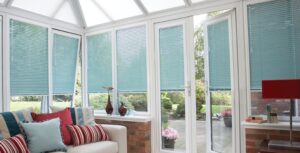
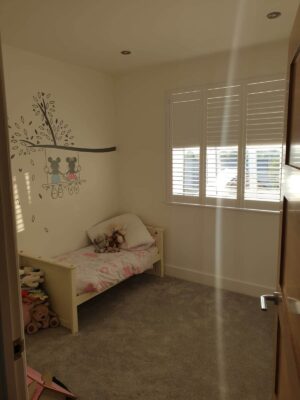
Are All Shutter Styles the Same? Exploring the Subtle Differences That Define Window Shutters
Read More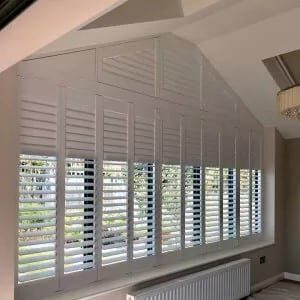
Are Shutters a Good Investment?
Read More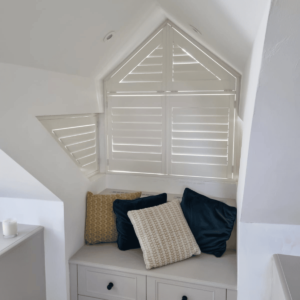
An In-Depth Look at Shaped Window Shutters
Read More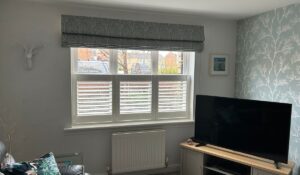
A Comprehensive Guide to Maintaining Your Investments in Blinds and Shutters
Read More